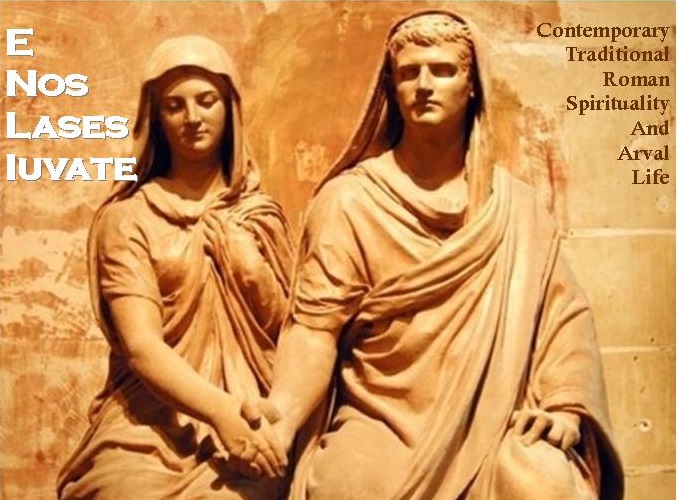In this period of year, Nature restarts its activities with great force. This happens both in the dimension of the Cultivated in that of the Wild. Tradition cites many divine forces and energies related to agricultural activity (strictly linked to the concept of colere Deos/Deas). Similarly, the sphere of the Wild is declined traditionally through a large number of forces and energies divine.
Faunus,
Silvanus, Diana, Feronia, etc ... are all forces related to the Wild: in particular the energy that most symbolizes the concept of
Wild remains undoubtedly Pan.
When
speaking about Pan, as well as of all divineWild forces, it's really hard
to make theoretical "doctrine", because these realities are particularly linked
to the idea of Experience. Pan cannot be "studied"; to be understood, this God must be experimented, Pan has to be met.
Pan is thus highly characterized by personal, intimate, passional and emotional aspects: this is maybe the reason why Pan was the God who made major to the violent imposition of monotheism. It was, and still is, tied to the deepest and secret part of the individual: his/her primitive instinct. In practice Pan reminds us that human beings, after all, are and remain "animals". Instincts are hidden in the deepest part of each of us, in the same
way Pan lurks in the deepest parts of the wild places inaccessible to
humans: in the solitude of the great forests where hardly the sun's rays
can penetrate.
While
the Urban and Rational Gods and Goddesses were removed by their temples, the
Gods and Goddesses of the wild instincts did not surrender and the forests were
called "sanctuaries": maybe they have never succumbed despite being
assimilated to the idea of Devil and forests considered places of the
devil. Andin the attempt to remove them from their forests. the monotheism has also tried to set up in the
woods and forests churches and convents, but without success.
The
Tradition provides a very detailed and particular description of this, given the peculiar aspects involved. Porphyr in Perì Agalmàton writes:
"They made Pan symbol of the Everything providing him with the horns as symbols of the sun and
moon, and the skin of deer as an emblem of the stars in the sky, or the
variety of Everything"
Pan is the Everything and symbolizing with his body the entire Cosmos. The
head is the superiority of the divine cosmic principle placed at the
top (the Sky) while the lower goat legs represent the link with its most solid,
instinctive and wild Earth. Usually he
has two horns (the Sun and the Moon or even the dualistic principle,
the duplicity), sometimes the horns of a deer (the sunrays or the
seven planets/colors/musical notes/metals of cosmic spiral). The face is red like fire, the skin is spotted to symbolize the sky full of stars. In hand brings the syringe or the bagpipe (control over the air and the winds as well as the celestial harmony) and a curved stick (circularity of Time). In general he is a male generative force but sometimes he shows both amle and feminine sexual and generative attributes.
The Pan Flute or syringe is made of reeds: this links the God to the nymphs (Syringe is a nymph), the rivers, the vital energy and primordial water.
Like when crossing a forest, we leave the trail and we fall in a particular fear because we feel we have left our security and we feel lost, similarly we perceive this feeling to be lost when we lose control of ourselves, when we feel that our passions and instincts can dominate totally us, when we're afraid of losing rationality that no longer supports us. This feeling is the Fear of Pan or Panic.
The Pan Flute or syringe is made of reeds: this links the God to the nymphs (Syringe is a nymph), the rivers, the vital energy and primordial water.
Like when crossing a forest, we leave the trail and we fall in a particular fear because we feel we have left our security and we feel lost, similarly we perceive this feeling to be lost when we lose control of ourselves, when we feel that our passions and instincts can dominate totally us, when we're afraid of losing rationality that no longer supports us. This feeling is the Fear of Pan or Panic.
This description can evidence that Pan is the Pagan God by definition: he is multiplicity, plurality, diversity, variety, linked to life, instincts, the liberation of the senses, just because the Everything, the Nature, the Universe is always multiplicity in movement. Pan, being "wild", is by definition a native, shamanic, prophetic, adrenaline and tribal Force, without constraints and rules; in short, he is, according to the monotheistic ethics, "what should not be."
It simply symbolizes our inability to completely control over Nature and ourselves.


Nessun commento:
Posta un commento